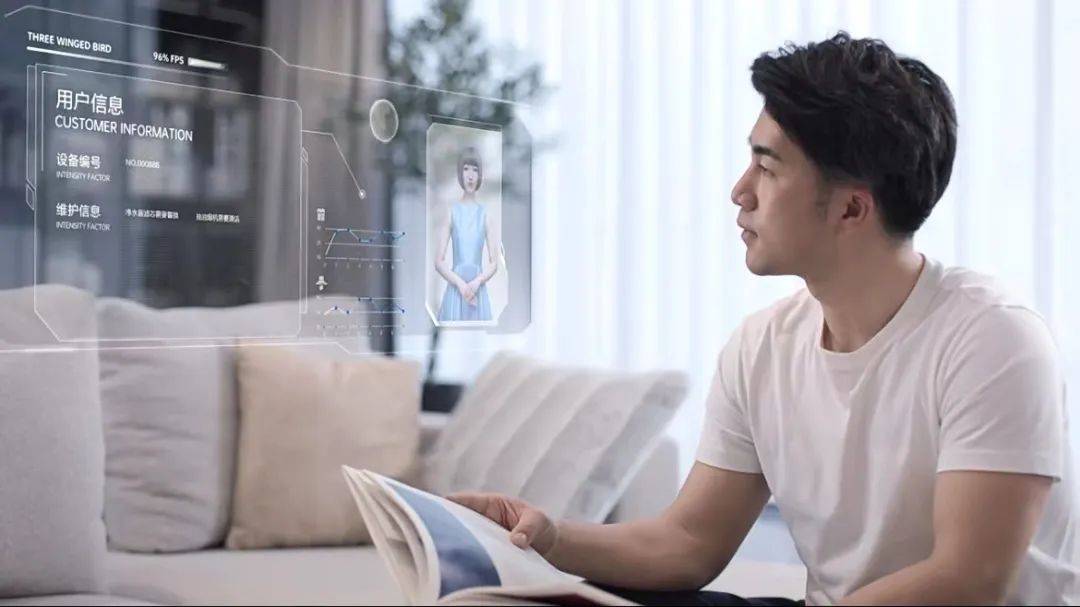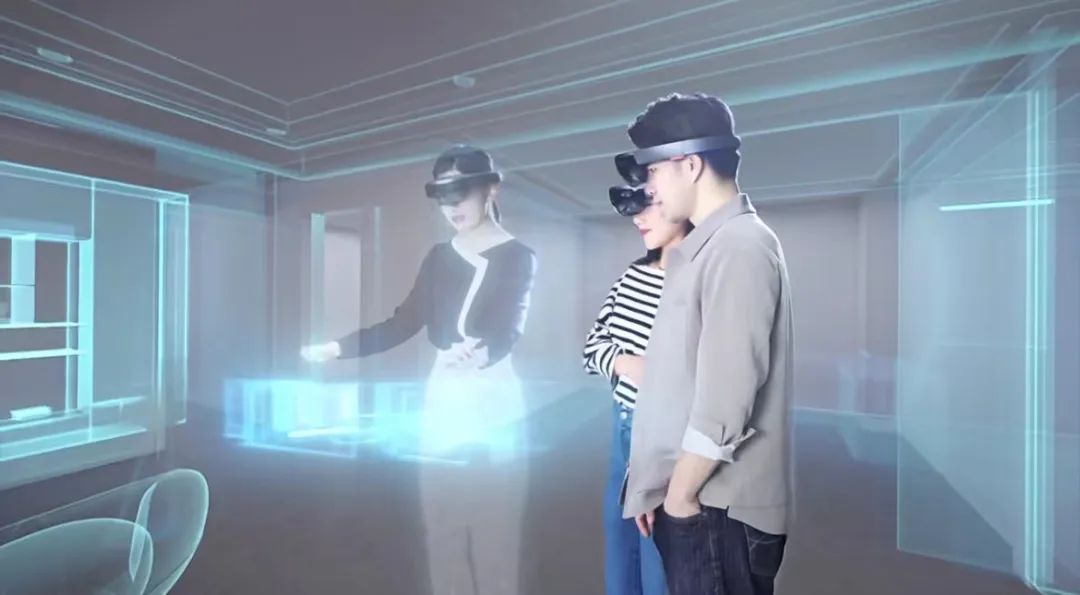
After a 90-minute workout, is that the most exhausting moment for Liu Genghong’s girls? No, it’s far from over.
The hot and humid living room needs timely ventilation, which means opening windows or finding a dehumidifier, air purifier, or air conditioner, and pressing the start button for each.
If smart appliances were installed at home, would it be better? Xiaohong, who works out every day, feels even more exhausted. After finishing her cardio, she has to catch her breath and shout, “Xiaox, turn on the air conditioner.” If the bathroom water heater or heater doesn’t respond to voice commands, she has to pick up her phone, open the app, and start each device one by one.
The reality of AI life today is that while we marvel at the sci-fi future depicted in the third season of “Love, Death & Robots,” we find that the TV still doesn’t understand the command to “turn off.” In fact, brands in the smart home industry have realized that only by changing these rigid interaction experiences and operational obstacles can homes truly become intelligent.
Is smart home truly intelligent?
In 2015, smart homes might not even qualify as “artificially intelligent.” Early smart plugs and switches, which focused on IoT technology, only achieved basic linkage functions. The addition of AI voice control finally made smart homes capable of conversation, but over time, it became clear that manual adjustments, settings, and edits were still necessary.
Why is that?
Many people do not realize that the seemingly omnipotent AI voice cannot distinguish specific home scenarios at all.
In a modern household, people’s needs at home involve not only sleeping, eating, bathing, and entertainment, but also correspond to completely different behaviors in different living scenarios.
However, for AI voice, “home” and “life” are unfamiliar concepts it has never learned. Most AI appliances accumulate data on the appliance’s functions and operations. Smart appliances trained on this data have to start learning from scratch when they arrive at a home. This leads to awkward operations: humans must issue specific commands that AI can understand to wake up or operate devices one by one.
In real home life, this approach is clearly unrealistic. To solve this problem, smart appliances have begun to offer linkage functions, allowing users to manually edit and create personalized service modes. However, this essentially shifts the responsibility to consumers to educate AI voice, and the actual experience remains very cumbersome.
Xiaoran, who bought a 300㎡ villa, installed more than 20 smart lights, and clearly cannot rely on voice commands to keep turning lights on and off. To achieve smart lighting control, he manually grouped the lights into five groups in the app, edited over ten sub-groups according to needs, and set trigger conditions, just to achieve the effect of saying “cinema mode” to control the living room lights. Just thinking about it is exhausting.
To address these manual operation troubles, brands in the smart home industry have begun to design deep linkages between appliances based on users’ core needs, even achieving perfect integration between appliances and home to create the optimal experience for users.
For example, the scene brand Sanyingniao proposed a “whole-house intelligent all-scenario solution.” The ideal life it depicts is one where users do not perceive complex devices and can receive personalized proactive services with simple commands or even without commands. The “Future Smart Home” lifestyle described by Sanyingniao has attracted a lot of consumer attention.
This is precisely why, in 2022, true whole-house intelligence became an increasingly obvious consumer trend in the smart home industry.
How can homes proactively serve humans?
In Sanyingniao’s global promotional video “Future Smart Home,” a smart living scene for a family of three is showcased.
When the family returns home, the house automatically senses and activates the homecoming mode, adjusting the lights, curtains, and fresh air to appropriate states; when the father enters the smart kitchen to seek inspiration for dinner, Sanyingniao’s AI smart housekeeper “Xiao You” recommends recipes and cooking methods based on user habits and family status; after dinner, the family watches a movie in the living room, and the house automatically adjusts the lighting and sound atmosphere; the AI smart housekeeper also proactively senses and monitors, taking care of the cleaning, maintenance, and upkeep of all smart devices in the house.
The smart life showcased in the video reflects Sanyingniao’s new thinking about smart home living.
“Scene” is a keyword mentioned multiple times in the video. The scene brand Sanyingniao hopes to distinguish itself from “appliance-centered” smart home solutions. After all, achieving interconnectivity among smart appliances has become standard in the whole-house smart industry, and once services are provided centered around appliances, it falls into the aforementioned trap of “troubling users.”
To prevent appliances from troubling humans and instead learn to proactively serve humans, a “human-centered” approach is needed. Sanyingniao’s method is to focus on human needs, then refine and segment those needs based on the real-life scenarios of home living.
After segmenting by scenario, AI can unleash greater advantages, allowing the entire home to function like a brain, learning more targeted environmental and behavioral data, training repeatedly, and ultimately landing in different scenarios to form modular solutions.
Sanyingniao’s whole-house intelligent all-scenario solution includes three major intelligent system solutions: whole-house intelligence, whole-house water, and whole-house air, as well as five major intelligent scenario solutions: smart kitchen, bedroom, living room, balcony, and bathroom.
To meet users’ personalized needs, the scenarios are further refined, extending to various customized solutions for cooking, movie watching, sleeping, and more.

Technical Support for Whole-House Intelligent All-Scenario
The kind of smart living that Sanyingniao covers across the whole house and all scenarios must rely on complex technical capabilities for implementation. This is the industry’s first brain-like intelligent system behind Sanyingniao, known as the “Smart Home Brain.” It mainly includes three technologies: IoT, AI, and big data algorithms.
IoT serves as the “senses” of all devices in the house, enabling all devices to interconnect, allowing the technical system to no longer be ignorant of the entire house but to perceive it in real-time.
AI voice and image recognition technology allows all devices in the house to recognize users’ voices and actions, determining intentions, thus replacing users in making proactive judgments and decisions.
Big data forms a knowledge graph of life scenarios in the cloud through smart home devices and sensors, injecting massive, scenario-divided learning and training data into AI.

Additionally, a terminal perception system spread throughout the house can provide real-time feedback on user behavior habits. This greatly shortens the process for AI to understand each family scenario, eliminating the need to “trouble” users to collect personalized usage data. In the long run, homes can continuously sense, learn, and evolve autonomously, proactively optimizing services.
Sanyingniao summarizes these technical supports as “three clouds” and a whole-house neural network. In practical use, they enable a more “seamless” living experience in smart homes.
Conclusion
Since the inception of smart homes, home products have evolved from simple smart switch controls to a rich variety of popular items, and then towards the more complex technology and service challenges of whole-house intelligence.
However, for consumers of smart homes, the desired intelligent life is not about being exhausted from purchasing products, upgrading functions, and editing modes, but about using technology to serve life, simplifying and easing the process, allowing life to return to being easy and comfortable.
This is also an essential question that needs to be considered as smart homes enter a phase of deep innovation: returning from “things” to “people.” A truly whole-house intelligent life will not make people weary from learning technology, but will allow technology to learn, understand, and serve people. Those technological innovations that actively embrace life scenarios are building a more authentic and promising future landscape.
Special Planning